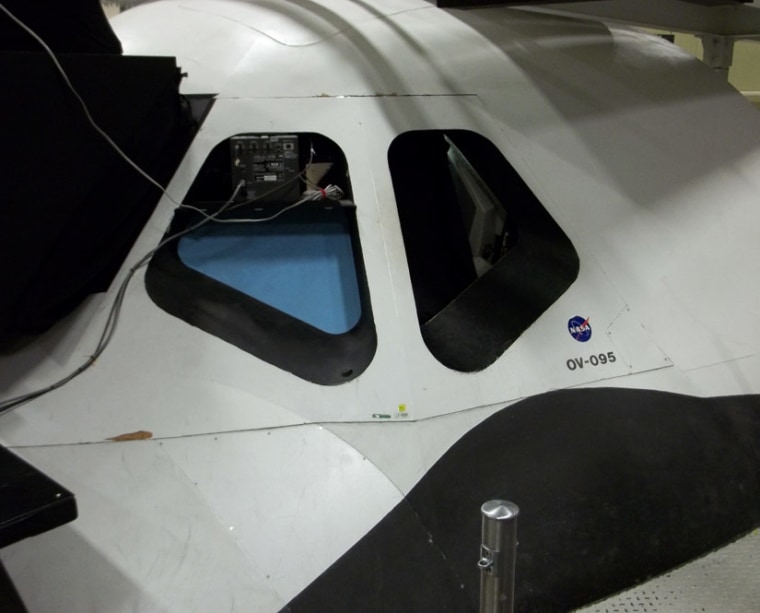Unlike famous sibling spaceships — Columbia, Challenger, Discovery, Atlantis and Endeavour — the little-known space shuttle inside Building 16 at the Johnson Space Center in Houston never got a name.
It's known only by the manufacturer's designation, Orbiter Vehicle 95, or OV-95, though it has "flown" all 135 space shuttle missions — at least 15 times apiece — plus dozens of precursor test flights by the prototype shuttle Enterprise.
The full-size orbiter is no mockup. It's an exact replica, electronically speaking, tasked to make sure the software and 230 miles of wiring needed to fly the shuttles are error-free.
When one of Atlantis' computers shut down last week, NASA engineers turned to OV-95 and its caretakers at the Shuttle Avionics Integration Laboratory, or SAIL, for answers.
Like the space-faring ships, OV-95 has the same five general purpose computers that control the shuttle — along with some 280 electronic boxes, all wired like the operational vehicles.
OV-95 has a cockpit, which is lined with hundreds of switches on the walls and ceiling, and a middeck filled with electronic boxes. A window overlooks the 60-foot-long, 15-foot-wide payload bay, thickly roped with neatly labeled bundles of wiring. Small rooms at the rear of the "cargo hold" house the electronics that would link up with the shuttle's engines.
"I liken it to a human body without the skin," said United Space Alliance engineer Frank Svrcek, who oversees SAIL.
"Underneath you see the organs, blood vessels and the nerves. You see the complete human body. With the SAIL, you see the scene behind the scene, the wiring and the black boxes. You see how complex the orbiter really is," Svrcek told Discovery News.
OV-95 doesn't have booster rockets, engines, wings, tail or landing gear. Computers simulate those aspects of flight, while OV-95 renders the electrical reality — the software and wiring.
"It all has to work together, time and time again," said Svrcek. "If you make a change to avionics, you have to test it here first."
Like thousands of shuttle workers, Svrcek, who has worked at SAIL since 1980, will be out of a job after Atlantis returns from the final shuttle mission this week.
Though the shuttle was state-of-the-art when it was designed in the 1970s, and its electronics have been upgraded over the years, the technology is dated, and the shuttles have fulfilled their 30-year mission.
"The shuttle has been an amazing learning tool," said program manager John Shannon said.
NASA is retiring its three surviving shuttles — Challenger and Columbia were lost in fatal accidents in 1986 and 2003, respectively — and using the money to develop new spaceships that can travel beyond the station's orbit 240 miles above Earth.
Discovery, Endeavour and Atlantis are promised to museums, but so-far OV-95 hasn't found a retirement home. NASA plans to list it among the items available for disposition after the shuttle program ends.
